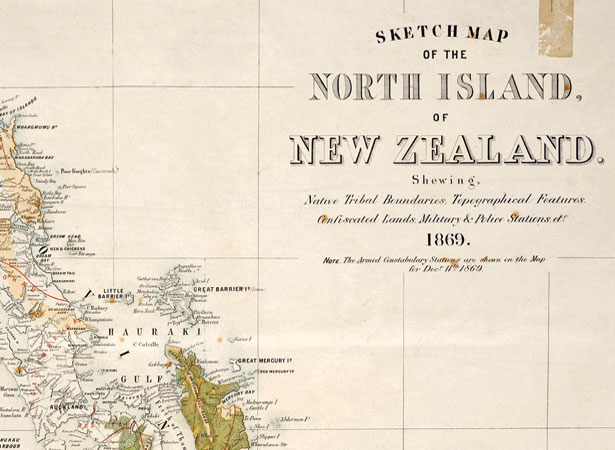
The New Zealand Settlements Act enabled the confiscation (raupatu) of land from Māori tribes deemed to have ‘engaged in open rebellion against Her Majesty’s authority’. Pākehā settlers would occupy the confiscated land.
On the eve of the British invasion of Waikato in July 1863 (see 12 July), the government ordered all Māori living in the Manukau district and on the Waikato frontier north of the Mangatāwhiri stream to take an oath of allegiance to the Queen and give up their weapons. Those who did not would ‘forfeit the right to the possession of their lands guaranteed to them by the Treaty of Waitangi’.
Under the New Zealand Settlements Act, the Waikato iwi lost almost all their land and Ngāti Hauā about a third of theirs. But kūpapa (pro-government or neutral) Māori also lost land as the yardstick rapidly changed from presumed guilt to convenience. Ngāti Maniapoto territory still under Kīngitanga control was untouched. In the long term, Taranaki Māori suffered most from confiscation in terms of land actually occupied.
Passed on the same day, the Suppression of Rebellion Act provided for the summary execution or sentencing to penal servitude of those convicted by courts martial of in any way ‘assisting in the said Rebellion or maliciously attacking the persons or properties of Her Majesty’s loyal subjects in furtherance of the same’ in any district where martial law was in force. There was no right of appeal. This law was applied retrospectively, and it remained in force until the end of the next session of the General Assembly.
Image: Map of the North Island showing tribal boundaries, topographical features, main areas of confiscated land, military bases and police stations, 1869
Read more on NZHistory
Raupatu – Māori King movement - 1860-94History of New Zealand, 1769-1914 – A history of New Zealand 1769-1914
External links
How to cite this page
'Land confiscation law passed', URL: https://nzhistory.govt.nz/the-new-zealand-settlements-act-passed, (Ministry for Culture and Heritage), updated 13-Dec-2021
